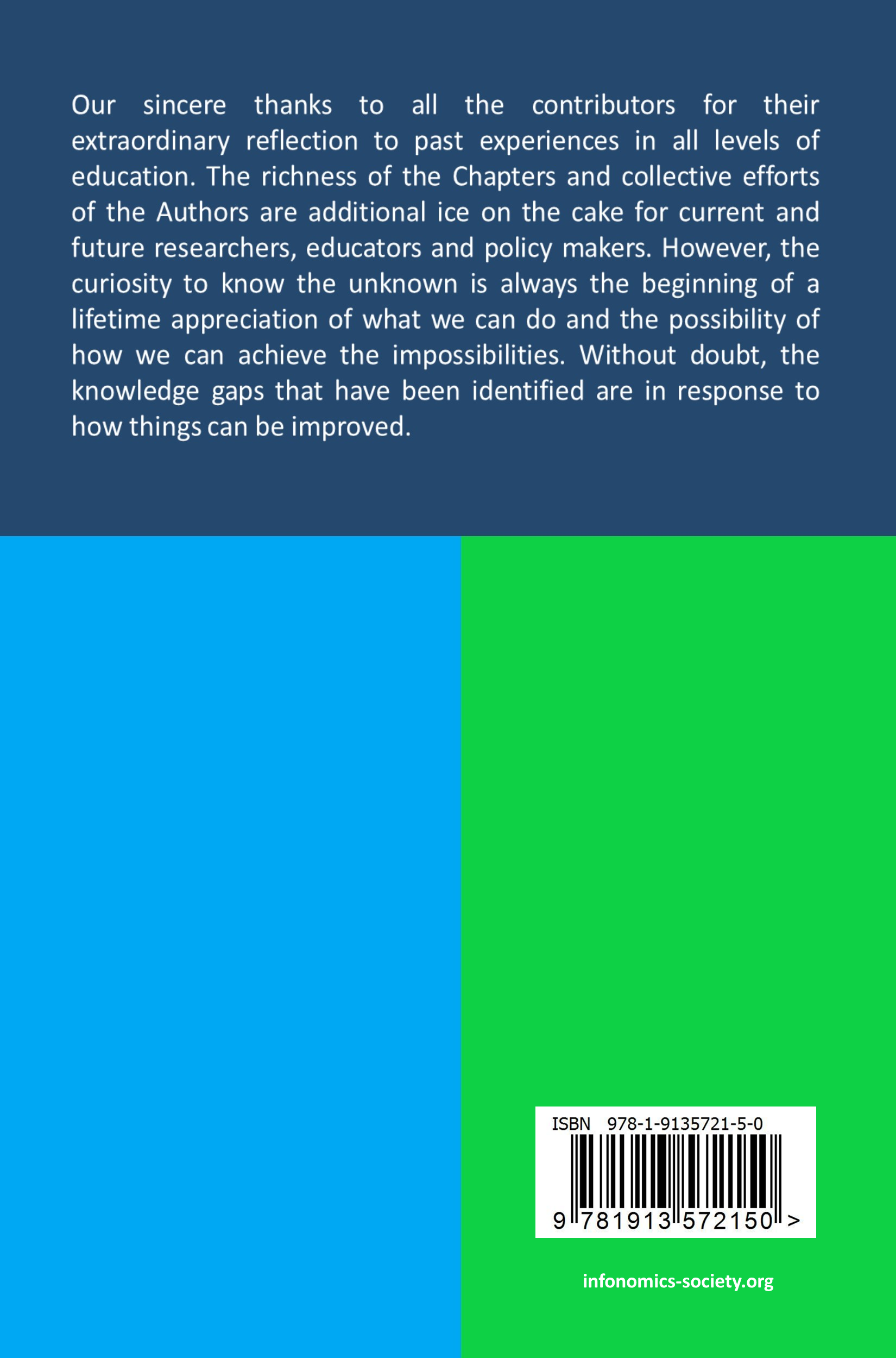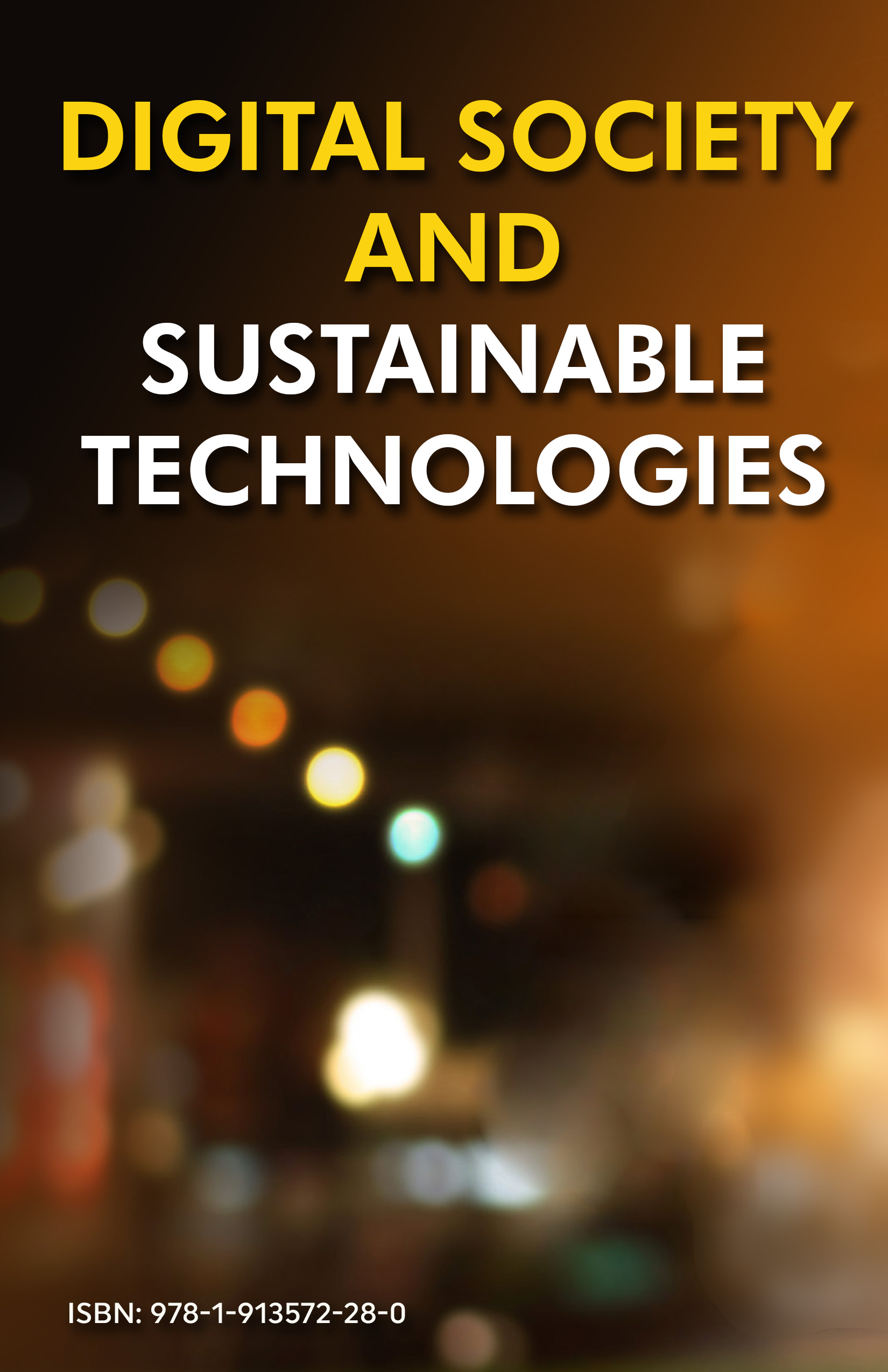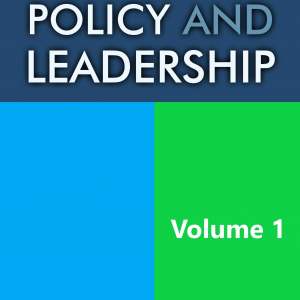About this book
The richness of the Chapters and collective efforts of the Authors are additional ice on the cake for current and future researchers, educators and policy makers. However, the curiosity to know the unknown is always the beginning of a lifetime appreciation of what we can do and the possibility of how we can achieve the impossibilities. Without doubt, the knowledge gaps that have been identified are in response to how things can be improved.
Table of contents
(9 Chapters)
Chapter 1 (Brett J. Holt)
An Aristotelian appeal to preserving academic freedom
The Chapter One explores the following discourses: the anatomy of a persuasive argument, academic freedom is long established and necessary for academic work to continue, academic freedom has survived many threats (past and current) and three appeals were made to the reader’s ethos, pathos, and logos on preserving academic freedom since it is necessary. Establishing and committing to academic freedom is credible (ethos), joyous (pathos), and rationale (logos). Academics will need to continue formulating arguments to combat the threats to academic freedom and if those arguments can be grounded in Aristotle’s appeals to persuasion than they might be successful at gaining the publics’ support and advocacy for preserving academic freedoms.
Chapter 2 (Justin Travis Wickard, Christina Janise McIntyre and Emily Reeves)
An exploration of college students’ perceptions of the efficacy of
online video response platforms
The Chapter Two focuses on the adaptation of pedagogical strategies for online coursework such as text-based discussions to mimic interactions of in- person small and large group class discussions. And how synchronous and asynchronous discussions have gained popularity in online, hybrid, and face-to-face courses and text-based course discussions are now a common feature of online courses. More than ever before the video response tools are promising possibilities but not much information exists on student perceptions of the efficacy of online text-based or video response platforms that are used for discussions. The question that this study seeks to answer is: What are college students’ perceptions of the efficacy of video response platforms?
Chapter 3 (James Bernauer)
Higher Education Faculty: What Motivates Them?
The Chapter Three is based on case study that investigates the motivations of higher education faculty in a doctoral-granting US medium-sized university. Specific areas of inquiry relate to teaching and scholarly inquiry. This study is based on nine in-depth interviews with faculty members both across academic disciplines and years of experience. In order to promote transferability (the analogue of external validity/generalizability under the quantitative paradigm), both the organization and the context were described so that readers can perhaps discern to what extent findings may apply to their own.
Chapter 4 (James Curiel, Robert K. Perkins and Austin Ashe)
Spicing It Up: Using Critical Action Learning (Cal) activities to
increase student success
The Chapter Four is experimenting with creative Critical Action Learning (CAL) activities and further discusses the ‘credentials’ of student success, defining and explaining CAL. The Authors hope that sharing victories, failures and insights can help others to inspire, motivate, and transform their classroom.
Chapter 5 (Marie Fisher)
The Covid 19 Pandemic – Is it the catalyst for developing digital
wellbeing approaches to transform learning and teaching practice?
The Chapter Five explores key questions such as: What is digital wellbeing? How does it manifest in our institutions and on a personal level? How does it help academics transform learning and teaching, and: What is the impact of social change on digital well-being? By using examples and mini case studies, the Author explores how we can continue to adjust our practice and support those who are reticent or reluctant to transition through technological change to improve academic teaching, learning and transformation of practice. The latter questions were explored through a reflective process by sharing scenarios to show the impact on institutions and on individuals through a socio-psychological lens which is integrated into a teaching framework.
Chapter 6 (Simon A. Tachie, Samuel K. Techie and Israel Kariyana)
Mathematical problem-solving strategies that enhance metacognitive
skills for Grade 10 learners
The Chapter Six utilises an explanatory sequential mixed-method design, the sample of 80 in-service Mathematics student teachers enrolled for PGCE at one of South African university. The study established that as the linear equations moved from single to multi-step, the multi-concept phase, there were an inverse relationship between anticipated details and actual details, which teachers provided. It also emerged that most participants procedurally solved the problems but failed to demonstrate the conceptual understanding by failing to provide step-by-step skills and strategies. The study concludes that there were glaring gaps and inconsistent approaches in the teaching of linear equations and the Authors gave recommendation that teachers must follow in adopting systematic teaching approaches that deepen mathematics conceptual understanding.
Chapter 7 (Shara May T. Espinol)
Learning and teaching methodologies: Student and Teacher Classroom
Dynamics
The Chapter Seven introduces the specific roles of a teacher including that of a counselor, the different teaching strategies being used today and conditions that make learning possible for a variety of students. Learning does not only happen inside the classroom, but this is the beginning. Thus, it is important to take note of the basic elements that would bring about a conducive learning environment. One of the key elements of a classroom is the teacher. Although the teacher is not at the center of the learning process, they play a great role in the delivery and acquisition of learning.
Chapter 8 (Tongpil Min)
Teaching creative thinking: The teaching method that can bridge the education to the future!
The Chapter Eight amplifies how education should train students to reflect their learning in real life regardless their fields of study and discusses the newly developed teaching methods for students to develop creative thinking and how these methods can bridge the future education gap. The discussion starts by exploring the source of the gap and the missing pieces from traditional teaching methods. Lastly, teaching methods for students to develop creative thinking and their application to real life were introduced.
Chapter 9 (Pascal Vrignat and Frédéric Kratz)
University and Company Partnership: An agile strategy for better
professional integration of Graduate Students
The Chapter Nine presents different stages which demonstrate that it is essential for our university training to collaborate with the industrial fabric (“work in real life”). It also shows that our scientific and technological training involves relentless investment to keep up with technological developments and the needs of manufacturers. The story of a close partnership that, through its organization and strategy, resulted in the certification of Internet of things (IoT) skills within the framework of Industry 4.0 were explained. This research traces the history of one such close partnership that has evolved over time between a certain number of actors. In 2021, this partnership made it possible to validate a self-styled “PLCnext” certification for students following a vocational degree course at the University of Orléans in France. This world-first system will allow other universities that are members of the EduNet network to benefit from this feedback.
Books for you
Bibliographic information
| Book Title
Education Policy and Leadership |
Edition Number
Volume 1 |
Publisher
Infonomics Society |
| Foreword By
Charles A. Shoniregun, Infonomics Society, UK and ROI
Barba A. Patton, University of Houston, USA
Galina A. Akmayeva, Infonomics Society, UK and ROI |
Copyright
2021 |
Copyright Holder
Infonomics Society |
| Authors
Brett J. Holt, Justin Travis Wickard, Christina Janise McIntyre, Emily Reeves, James Bernauer, James Curiel, Robert K. Perkins, Austin Ashe, Marie Fisher, Simon A. Tachie, Samuel K. Techie, Israel Kariyana, Shara May T. Espinol, Tongpil Min, Pascal Vrignat, Frédéric Kratz |
e-ISBN 978-1-913572-16-7
ISSN 2752-8537
ISBN 978-1-913572-35-8 (Softcover)
ISBN 978-1-9135721-5-0 (Hardcover)
DOI 10.20533/978-1-913572-16-7 |
Number of Pages
i – x, 151
Topics
Education Policy, COVID-19, Leadership, ICT |
Preview
A very good book with an exceptional viewpoints on critical issues that require deep thinking in educational policy and leadership. - Susan Thomas (Oxford, UK) 30 August 2021.
Review
Technical and non-technical problems are well tabled. – Liz Waterman (California, USA) 9 September 2021.
The Chapters contributors show in-depth knowledge of the subject matter and the interlocking sequence of the problems, personal experiences and solutions that are beyond expectation. – Seth Goldsmith (Cambridge, UK) 8 September 2021.
The structure and layout of the book are outstanding. – Jane Smith (California, USA) 6 September 2021.
Without doubt, the collective experiences and content enrichment of the Chapters are extraordinary insight of best practices. - Terry McGill (Toronto, Canada) 4 September 2021.
Return Policy
This item is non-returnable, but if the item arrives damaged or defective, a replacement will be send to you. Please send an email to defectivebook@infonomics-society.org
For any other queries, please contact books@infonomics-society.org










